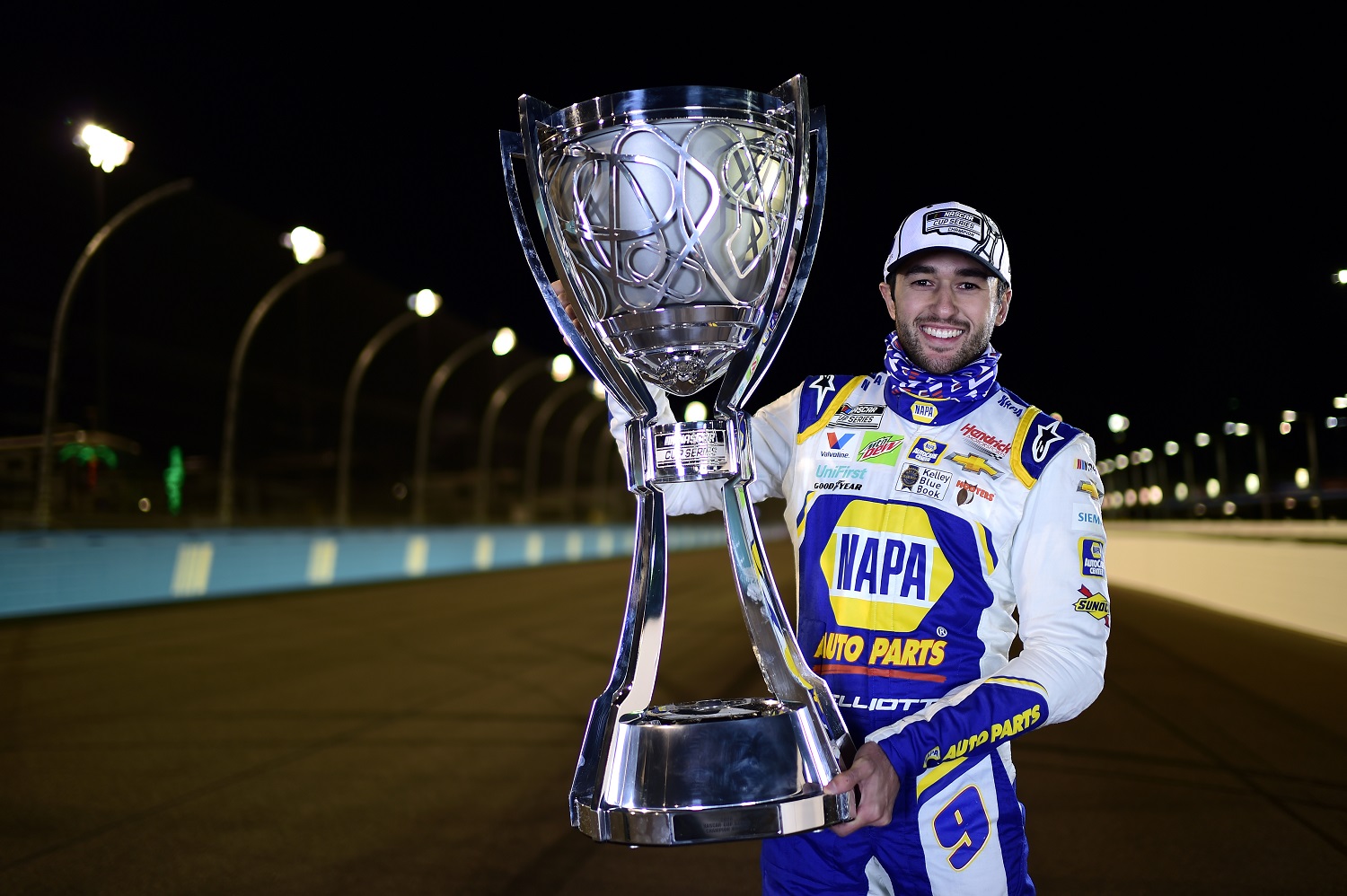NASCAR
How Does the NASCAR Cup Series Playoff System Work?

Win, and you’re in. Win more than anyone else and you can end the racing season in November with a lovely parting gift but no trophy. Yes, the NASCAR Cup Series playoffs are that convoluted to the novice. However, the system for deciding season championships, like the one Chase Elliott earned in 2020, makes more sense than critics might concede.
The old ways of deciding the NASCAR champion did not always work
Other than head-to-head competition, like the NFL or NBA playoffs, there is no simpler way of deciding championships than embracing a points system; assign competitors points based on where they finish each week and then add up the points at the end. Richard Petty earned seven titles under that system.
That worked fine, except when it didn’t work. Too often, one or more races at the back end of the NASCAR schedule became meaningless because a driver had already built an insurmountable points lead. The biggest rout ever came in 1975, when Petty clinched the championship after the 26th of 30 races. Twelve years later, Dale Earnhardt wrapped up one of his seven titles with two races to go.
Such anticlimactic finishes were bad for business. Sports fans moved on to football or basketball once a driver clinched, and NASCAR was also competing with the baseball postseason and late-season golf.
NASCAR began addressing that in 2004 with the introduction of the Chase for the Championship. Drivers finishing in the top 10 in regular-season points started the scoring over for the final 10 events. That still opened the door to drivers building commanding leads in points or the overall winner earning his championship on a steady stream of second- and third-place finishes.
Later, NASCAR expanded the Chase field to 12 cars in order to include winning drivers who did not qualify on points. That was better but still flawed.
How do drivers make it to the NASCAR Cup Series playoffs?
NASCAR introduced the current playoff format in 2014 with the intention of emphasizing regular-season victories. Under almost any circumstance, winning one of the 26 regular-season races now earns a driver one of the 16 playoff berths. There are two notable exceptions:
- Part-time NASCAR Cup Series drivers are not eligible, which is why AJ Allmendinger’s thrilling win on the Indianapolis Motor Speedway road course didn’t qualify him to advance this season.
- If more than 16 drivers win in the regular season, then the top 16 in points lock down the playoff berths.
If there aren’t 16 winners, the last spots go to the drivers highest on the points list. That’s why Richard Childress Racing teammates Austin Dillon and Tyler Reddick will go to Daytona battling for a single spot – unless another non-winner comes along to steal it by taking the checkered flag.
There’s an additional layer to the regular season that affects the playoffs. Rather than starting the 10-race playoff series with clean slates, drivers earn playoff points during the season. Every race victory, like Kyle Larson’s five in 2021, is worth five points. Every stage victory within races is worth another point.
Additionally, the regular-season points champion picks up 15 playoff points, the runner-up earns 10, and the remaining drivers in the top 10 pick up between one and eight points.
Kevin Harvick won seven regular-season races (plus the points title) and Denny Hamlin six last season, helping stake them to an early advantage in the playoffs.
How does the NASCAR Cup Series playoff system work?
Probably the single most confusing feature for non-fans to grasp once the regular season concludes is that the 16 drivers in the playoffs continue to race side-by-side with the other 20 or so teams. That’s because sponsorship deals must be honored and weekly prize money is still on the line.
The playoffs are conducted in four segments, the first three of which consist of three races apiece. The four drivers lowest in points after each three-race round bow out from championship contention, though a win in any of the three races will guarantee advancement to the next round.
There are only four drivers remaining after the ninth race, and the championship is an all-or-nothing affair in the finale. The highest finisher among the four is the champion.
A year ago, the Championship Four of Elliott, Brad Keselowski, Joey Logano, and Hamlin swept the top four spots at Phoenix, with Elliott snagging the title by taking the checkered flag.
Though it’s possible to win the title despite a driver from outside the Championship Four capturing that final race, it hasn’t happened since NASCAR adopted its current format in 2014.
Like Sportscasting on Facebook. Follow us on Twitter @sportscasting19.











